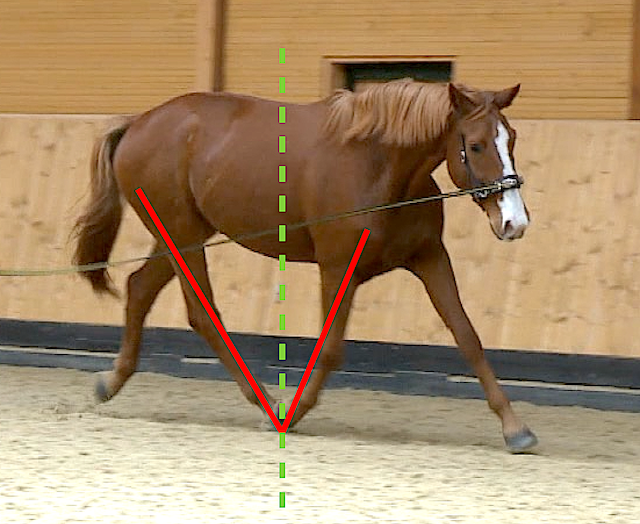Evaluating the Basic Gaits of Horses
Learn Lunging by babette Teschen
Before we start looking at the details of a specific horse’s way of moving, we need to take a look at the basic gaits – walk, trot, and canter. In order to be able to evaluate the basic gaits, one must know what they normally look like – in general, but also in the individual horse. Every gait in every horse looks a bit different due to the respective breed, conformation, age, training level, and many other reasons.
The first thing to do is to look at how the horse moves naturally without trying to manipulate the gait. This way you get to know its unique way of moving and you get a feel for the special challenges of this individual horse. This short introduction into the evaluation of the basic gaits will help you.
The Walk
The walk is a four-beat gait. A good walk is supple, rhythmic, forward thinking and elastic with long steps. The front legs swing freely forward from the shoulder, the hind legs step far underneath. At a working walk the hind hoof should step into the footprint of the front hoof, at a forward walk the hind leg should step one or two hoof lengths beyond that.
The sequence at the walk consists of eight phases, with two or three hooves on the ground at the same time. The footfall is right hind, then right front, then left hind, then left front. The movement is lateral, but not at the same time. If both legs on one side move in unison the horse is showing pace.
The Trot
The trot is a two-beat diagonal gait with four phases. When one diagonal pair of legs is on the ground, the other pair swings forward in the air. At a working trot the hind hoof should step into the footprint of the front hoof. At a forward trot the hind hoof should land one to two hoof lengths beyond the print of the front hoof.
The cannon bone of the hind leg and the forearm of the diagonal front leg should be parallel, as shown in this photo:
When the horse steps well under its center of gravity with the hind leg, so the hind hoof lands in the footprint of the front hoof, a V is formed, as you can see in this photo. The point of the V should be directly under the horse’s center of gravity, like you can see in this photo of Losti:
Here the V is not under the center of gravity of the Icelandic mare Vik, but further back.
When the hind leg does not step far enough forward under the center of gravity, the V is not closed, like you see here.
The two front legs form a triangle with the ground, and the hind legs as well. Ideally, these two triangles should have the same size. They will form a regular M, as you can see here again with Losti.
A smaller triangle formed by the hind legs means that the hindquarters are not active enough. You can see this in the next still photo.
The Canter
The canter is a three-beat gait with six phases. The inner hind leg and outer front leg move together. The inner hind leg should move far under the center of gravity and bend at the hock during the support phase.
A distinction is made between right lead canter and left lead canter, depending on footfall and reach of the front leg. On the lunge the horse should always canter on the inside lead, so right lead canter to the right, and left lead canter to the left.
Here Dalia is in the right lead canter.
As the training progresses, the horse should canter more and more “uphill”. You can see this very well in this photo of Dalia’s canter.
Canter Faults
Counter canter and cross canter are considered faulty. They can be caused by an uncorrected crookedness, tension, a blockade, or bad balance.
Counter Canter
The faulty counter canter can be seen clearly in this still photo: Flensburger’s outside front leg reaches farther forward, even though it should be his inside front leg.
Cross Canter
When the horse’s front legs move in regular canter, but the hind legs in counter canter, we see cross canter, like here with Losti:
Note:
It is not a problem if the horse picks up the wrong lead once, but if this happens often or regularly, the cause should be investigated.











